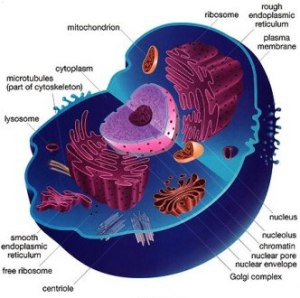 Prokaryotic Organism
Prokaryotic Organism
Prokaryotic organisms fit into the domains of bacteria and archaea. Prokaryotic organisms are single celled which means they have one cell which controls everything such as reproduction and movement. Prokaryotic cells are different then eukaryotic cells because they typically don’t have a nucleus, mitochondria, chloroplast, golgi apparus or endoplasmic reticulum. Since they lack many important cell parts found in eukaryotic organisms they function completely differently. One example of this is that the enzymes needed for cellular respiration are attached to the plasma membrane instead of the mitochondria like in eukaryotic cells. Also without a nucleus DNA is stored within the nucleoid. The flagellum, attached to the back of a prokaryotic cell is used for movement. The most common type of prokaryotic organisms is bacteria. To be more specific, E. coli.
Eukaryotic organism
Eukaryotic organisms consist of plants, animals, fungi, and protists. Specific examples of eukaryotic organisms are humans, flowers, paramecium, and trees. The easiest way to distinguish that an organism is eukaryotic is the presence of the nucleus. The nucleus, which contains the DNA, is the “brain” of the cell and tells it how to work. Eukaryotic organisms are multi cellular.
Aschleighena problem
When seeing a puddle of water in my back yard the LAST thing I wonder is whether or not the organisms found inside are eukaryotic or prokaryotic probably because I don’t care, but this isn’t the case for Aschleighena. Even though he/she is nerdy enough to wonder such question, he/she doesn’t know how to tell them apart. Here are some ways she can tell them apart by using a microscope:
1. Add chemicals to the cell to stain the nucleus. If it turns out there is a nucleus he/she will know that it is a Eukaryotic cell.
2. Are the organisms found inside the water appear to have one cell or multiple cells? If there are multiple cells then the organism is eukaryotic. If they are single celled organisms then they are prokaryoitic.
3. Does it have many structures? If so it is eukaryotic!!!


